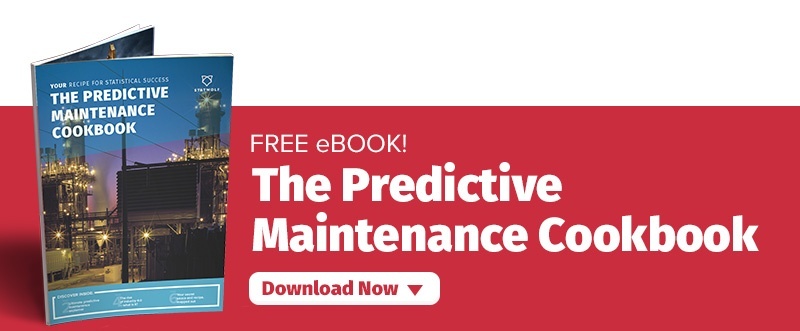5 ways to tell if your business is ready for predictive analytics
DJO Global is a medical device company – but more importantly, it’s a company that’s in the midst of digital transformation. On the back of losses in its Q3 2017 earnings, it has embraced a new approach to analytics in its partnership with Birst.
Using a cloud platform, DJO Global’s data is consolidated from its five ERP systems and updated daily in an intuitive dashboard. With the new tool, the DJO team can use analytics to anticipate and take advantage of what’s going to happen.
It’s business intelligence as intended – and it’s only one of the hundreds of use-cases for companies which are embracing data science and predictive analytics.
Essentially, predictive analytics give an organisation the capacity to improve its business processes, enhance decision-making, and better understand defined goals.
For most businesses, it’s an obvious investment – but how can you tell if your organisation is primed for predictive analytics?
1. Does your organisation have adequate data architecture and a mature data culture?
The ultimate starting point of any predictive analytics project is in considering the analytics maturity of the organisation. Essentially, implementing a data science project falls broadly into four steps:
1. Identifying current structure: What challenges exist to data integration? Can existing machines be retro-fitted with sensors? Is the data clean or will it require extensive cleaning operations? Is the company really a viable candidate for predictive analytics as it currently stands?
2. Identifying current datasets: The company should consider if it has the capabilities to empower users across the organisation. Essentially, what data is available and what is needed?
3. Investment: At this point, the company will have identified that it has clean data and the right infrastructure. Data scientists will be brought on board or engaged to start considering patterns and anomalies.
4. Predictive: Once the first three steps are completed, a company will have a mature data culture and the tools in place to actively implement predictive models.
In brief, the organisation needs to assess its structure and capabilities, starting with the current data architecture, team, and available data, moving right through to engaging with in-house or third-party data scientists to create the predictive model that’ll help to revolutionise the organisation.
Using data effectively hinges on the right data architecture – and not on rushing to acquire the tech du jour. Instead, the company should consider the long-term creation of sustainable data architecture.
An adequate data architecture needs to eradicate redundant or poorly thought-out data storage, move on from inefficient legacy systems, and focus on creating a culture of sustainability – for example centralising customer information from multiple data warehouses into one storage space.
2. Does your company have the ability to capture performance data from current operations?
Brilliant business intelligence software isn’t a solution; instead it’s an enabler for utilising the data a company has. However, without the right tools, a data project will never move past the initial query stage.
For example, in the offshore vessel industry, operators are using ITC to reduce costs, improve crew welfare, and enhance operations by monitoring on-board equipment performance.
Inmarsat, owners and operators of a global satellite network, provides the connectivity between the ships and the shore so that the remote monitoring system can work.
The shipping industry identified a problem and found the solution by considering current tech and its limitations – and bridging it with third-party satellites.
To that end, organisations need to look at their structure and consider if they have the ability to capture performance data. Will the data be clean – and therefore, will it be usable within a predictive project?
3. Has your company made an investment in cloud solutions or does it have the ability to do so?
Data science is a broad topic and it touches on many areas, including business intelligence, cloud computing, Big Data, and business theory. Predictive modelling falls squarely into the overlapping subsets – but without the willingness to invest in cloud solutions, a company may fall short of its end goal.
The ultimate benefit of predictive modelling (and data science at large) is the ability to analyse and react to data and developments in real-time from anywhere. A cloud solution or a hybrid solution (one of the emerging trends of 2018) is an important part of a predictive project, so the company needs to determine if the capital for investment is there.
4. Have you chosen a project lead?
Data analytics can inform a strategy for digital transformation, but without a project lead it’s akin to owning a ship without a rudder. You might have the vessel in place – but you can’t steer it towards the destination.
The same premise applies to predictive analytics. A successful data science project needs top-down cooperation from senior management right through to the operators who will be responsible for implementing the changes suggested by the model.
Leadership needs to be on-board with analytics to fully usher in the sea-change that is a predictive model. Ultimately, someone will need to take the onus of responsibility and become the data science project lead.
5. Does your company have adequate resourcing for data analytics or access to a third-party provider?
In many ways, building a predictive model is a later step in a business intelligence journey.
The data model should lead to a framework for effectively analysing (clean) data, and the company should have the ability to analyse and visualise data such that it can see the story of the data.
Ultimately, whether a company is ready for predictive analysis comes down to two things: the data and the team who will interrogate and utilise it.
It may be a case that the company uses a third-party data science provider – or it may choose to use its resourcing to build an in-house team. Regardless, the outcome should be a predictive model that integrates into daily operations and improves business processes and decision-making.
Want to create a predictive model that will revolutionise your business?
Whatever your data science goals are, Statwolf's expertise can help you find the best solution for you and your business.
Our team of data scientists have worked on predictive modelling programmes around the world so can help with any queries you might have.
Contact us today for more information or click here to get a free consultation with one of our data scientists.



